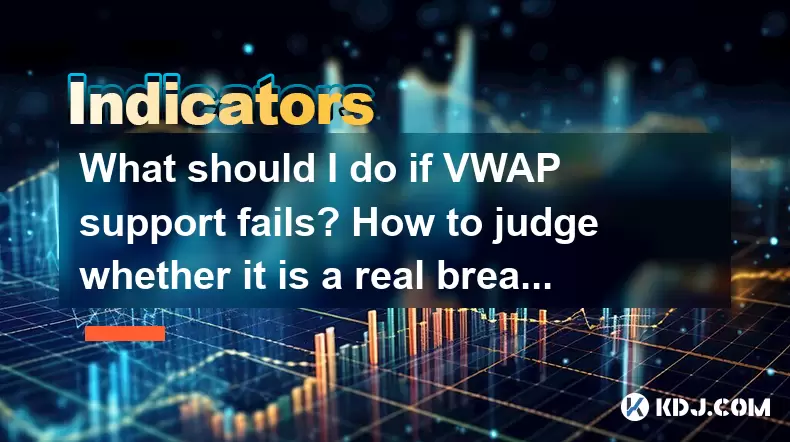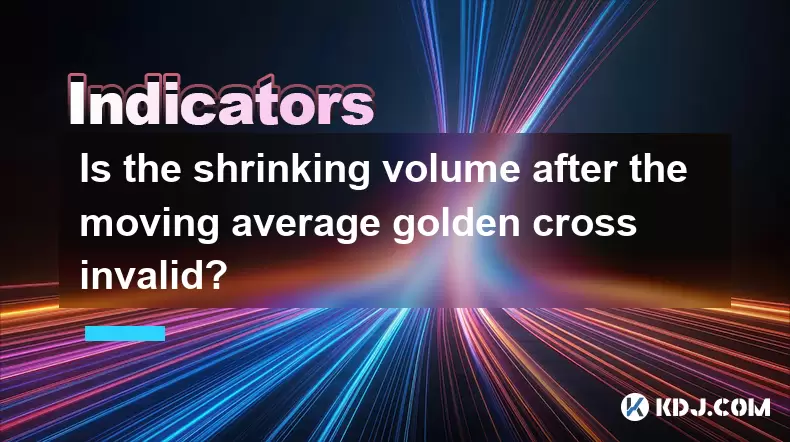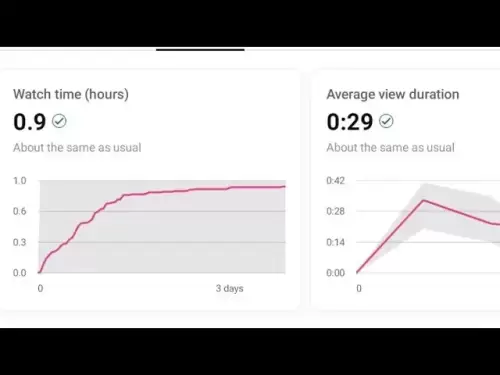-
 Bitcoin
Bitcoin $103,456.1111
0.49% -
 Ethereum
Ethereum $2,414.9631
0.02% -
 Tether USDt
Tether USDt $1.0006
0.05% -
 XRP
XRP $2.1083
0.24% -
 BNB
BNB $634.8760
-0.76% -
 Solana
Solana $139.8437
1.94% -
 USDC
USDC $0.9998
-0.01% -
 TRON
TRON $0.2737
0.97% -
 Dogecoin
Dogecoin $0.1602
0.20% -
 Cardano
Cardano $0.5737
1.08% -
 Hyperliquid
Hyperliquid $32.9779
-2.54% -
 Bitcoin Cash
Bitcoin Cash $474.8886
-1.80% -
 Sui
Sui $2.6272
-1.99% -
 Chainlink
Chainlink $12.4878
0.14% -
 UNUS SED LEO
UNUS SED LEO $8.9234
0.35% -
 Stellar
Stellar $0.2411
-0.18% -
 Avalanche
Avalanche $17.0274
-0.70% -
 Toncoin
Toncoin $2.8936
-1.11% -
 Shiba Inu
Shiba Inu $0.0...01112
-0.58% -
 Litecoin
Litecoin $82.6982
1.33% -
 Hedera
Hedera $0.1423
-0.05% -
 Monero
Monero $314.8455
3.26% -
 Ethena USDe
Ethena USDe $1.0006
0.01% -
 Polkadot
Polkadot $3.4043
1.14% -
 Dai
Dai $0.9999
0.01% -
 Bitget Token
Bitget Token $4.2848
-0.13% -
 Uniswap
Uniswap $6.8748
-5.45% -
 Pepe
Pepe $0.0...09661
0.52% -
 Pi
Pi $0.5359
1.19% -
 Aave
Aave $242.9168
-1.03%
What should I do if VWAP support fails? How to judge whether it is a real break after breaking?
If VWAP support fails in crypto trading, reassess your position, look for confirmation from other indicators, and consider shorting if the break is genuine.
May 27, 2025 at 07:49 pm

When dealing with the Volume Weighted Average Price (VWAP) in the context of cryptocurrency trading, understanding what to do if VWAP support fails and how to judge whether a break is genuine is crucial. This article will delve into these aspects to provide a comprehensive guide for crypto traders.
Understanding VWAP and Its Importance in Cryptocurrency Trading
VWAP is a trading benchmark used by investors to gauge the average price at which a cryptocurrency has traded throughout the day, weighted by volume. It is particularly useful in the volatile crypto markets because it provides a more accurate representation of the market's sentiment by considering both price and volume.
In cryptocurrency trading, VWAP helps traders determine the quality of their trades. If a trader buys a cryptocurrency below the VWAP, it is considered a good trade since the price is lower than the day's average. Conversely, buying above the VWAP might suggest that the trader paid more than the average market price.
What to Do If VWAP Support Fails
When the price of a cryptocurrency falls below the VWAP, it is said that the VWAP support has failed. This can signal a shift in market sentiment from bullish to bearish. Here are steps to take if VWAP support fails:
Reassess Your Position: If you have a long position, consider whether you should exit to minimize losses. Evaluate the overall market conditions and other technical indicators to make an informed decision.
Look for Confirmation: Do not act solely based on VWAP. Look for confirmation from other indicators like the Moving Average Convergence Divergence (MACD) or the Relative Strength Index (RSI) to confirm the bearish trend.
Set Stop-Loss Orders: If you decide to maintain your position, set stop-loss orders to protect against further declines. This can help limit potential losses if the price continues to drop.
Consider Shorting: If you believe the downward trend will continue, you might consider shorting the cryptocurrency. However, ensure you have a solid understanding of the risks involved in short selling.
Judging Whether a Break is Genuine
Determining whether a break below the VWAP is a genuine break or just a temporary dip is crucial for making informed trading decisions. Here are some steps to help you judge:
Volume Analysis: A genuine break often comes with a significant increase in trading volume. If the volume is low during the break, it might indicate a false break.
Price Action: Look for sustained movement below the VWAP. If the price quickly returns above the VWAP, it might not be a genuine break. Conversely, if the price continues to move lower and stays below the VWAP, it's more likely a genuine break.
Other Technical Indicators: Use additional technical indicators to confirm the break. For example, if the MACD shows a bearish crossover and the RSI is in oversold territory, it might support the idea of a genuine break.
Market Sentiment: Consider broader market sentiment and news that might affect the cryptocurrency. Negative news or a bearish market sentiment can reinforce a genuine break.
Strategies to Use After VWAP Support Fails
After confirming that the VWAP support has failed and the break is genuine, traders can employ several strategies:
Short Selling: As mentioned earlier, if you believe the downward trend will continue, short selling can be a profitable strategy. Ensure you understand the risks and have a clear exit strategy.
Buying Opportunities: If you believe the market will eventually recover, consider buying at lower prices. This strategy requires patience and a belief in the long-term value of the cryptocurrency.
Diversification: Spread your investments across different cryptocurrencies to mitigate risk. If one cryptocurrency fails to recover, others might perform better.
Technical Analysis: Continuously monitor technical indicators to identify potential reversal points. Look for signs of a bullish reversal, such as a bullish divergence on the MACD or a move back above the VWAP.
Tools and Resources for VWAP Analysis
To effectively analyze VWAP and make informed trading decisions, traders can use various tools and resources:
Trading Platforms: Many trading platforms, such as Binance and Coinbase Pro, offer built-in VWAP indicators. Ensure you are familiar with how to access and interpret these indicators on your chosen platform.
Charting Software: Tools like TradingView and MetaTrader provide advanced charting capabilities, including customizable VWAP indicators. These platforms allow you to overlay VWAP with other technical indicators for a more comprehensive analysis.
Educational Resources: Websites, blogs, and YouTube channels dedicated to cryptocurrency trading often provide tutorials and guides on using VWAP effectively. Continuous learning and staying updated with the latest trading strategies is essential.
Community Forums: Engaging with other traders in forums like Reddit's r/CryptoCurrency or Bitcointalk can provide insights and real-time feedback on market movements and VWAP analysis.
Practical Example of VWAP Analysis in Cryptocurrency Trading
To illustrate how to apply VWAP analysis in real-world trading, consider the following example:
Suppose you are trading Bitcoin (BTC) and notice that the price has been trading above the VWAP for most of the day. However, you observe a sudden drop below the VWAP accompanied by a significant increase in trading volume. Here's how you might proceed:
Confirm the Break: Check other technical indicators like the MACD and RSI. If the MACD shows a bearish crossover and the RSI is moving towards oversold territory, it supports the idea of a genuine break.
Analyze Market Sentiment: Look for any recent news or events that might have triggered the drop. If there's negative news, it might reinforce the bearish sentiment.
Decide on Action: Based on your analysis, you might decide to exit your long position or consider shorting BTC. Set stop-loss orders to manage risk.
Monitor and Adjust: Continuously monitor the price action and adjust your strategy as needed. If the price quickly rebounds above the VWAP, it might indicate a false break, and you can adjust your position accordingly.
Frequently Asked Questions
Q: Can VWAP be used for all cryptocurrencies?
A: Yes, VWAP can be used for all cryptocurrencies. However, its effectiveness might vary depending on the liquidity and trading volume of the specific cryptocurrency. More liquid cryptocurrencies with higher trading volumes tend to provide more reliable VWAP data.
Q: How often should I recalculate VWAP during the trading day?
A: VWAP is typically recalculated continuously throughout the trading day. Most trading platforms update the VWAP in real-time, reflecting the latest trades. For intraday trading, it's beneficial to monitor the VWAP frequently to stay aligned with current market conditions.
Q: Is VWAP more useful for short-term or long-term trading?
A: VWAP is more commonly used for short-term trading strategies, such as day trading, where it helps traders assess the quality of their trades within the day. However, it can also be used in longer-term trading to understand average price trends over extended periods, although other indicators might be more suitable for long-term analysis.
Q: Can VWAP be used in conjunction with other trading strategies?
A: Yes, VWAP can be effectively combined with other trading strategies and indicators. For example, using VWAP with trend-following indicators like moving averages or momentum indicators like the RSI can provide a more comprehensive view of market conditions and help traders make more informed decisions.
Disclaimer:info@kdj.com
The information provided is not trading advice. kdj.com does not assume any responsibility for any investments made based on the information provided in this article. Cryptocurrencies are highly volatile and it is highly recommended that you invest with caution after thorough research!
If you believe that the content used on this website infringes your copyright, please contact us immediately (info@kdj.com) and we will delete it promptly.
- Ruvi AI: The Audited Token Poised to Outshine Shiba Inu
- 2025-06-22 10:25:12
- Dypians, DeFi, and Sei Network: A Deep Dive into the Latest Trends
- 2025-06-22 10:25:12
- Hacken Security Breach Highlights Risks Across Ethereum and BSC
- 2025-06-22 08:25:12
- SHIB Price, Forecasts, Timelines: Will Shiba Inu Ever Reach the 'One-Cent Dream'?
- 2025-06-22 08:25:12
- Avalanche vs. Ruvi AI: Why Smart Money's on This Audited Token
- 2025-06-22 08:45:12
- Bitcoin Demand on Pause: What's Next for the Crypto King?
- 2025-06-22 08:45:12
Related knowledge

Does the second surge in the RSI overbought zone induce more?
Jun 22,2025 at 08:35am
Understanding the RSI Overbought ZoneThe Relative Strength Index (RSI) is a momentum oscillator commonly used in technical analysis to measure the speed and change of price movements. It ranges from 0 to 100, with values above 70 typically considered overbought and values below 30 considered oversold. When the RSI enters the overbought zone for the firs...

Does the sudden contraction of ATR indicate the end of the trend?
Jun 20,2025 at 11:14pm
Understanding ATR and Its Role in Technical AnalysisThe Average True Range (ATR) is a technical indicator used to measure market volatility. Developed by J. Welles Wilder, ATR calculates the average range of price movement over a specified period, typically 14 periods. It does not indicate direction—only volatility. Traders use ATR to gauge how much an ...

Is it invalid if the DMI crosses but the ADX does not expand?
Jun 21,2025 at 09:35am
Understanding the DMI and ADX RelationshipIn technical analysis, the Directional Movement Index (DMI) consists of two lines: +DI (Positive Directional Indicator) and -DI (Negative Directional Indicator). These indicators are used to determine the direction of a trend. When +DI crosses above -DI, it is often interpreted as a bullish signal, while the opp...

How to filter false signals when the SAR indicator frequently flips?
Jun 21,2025 at 08:43pm
Understanding the SAR Indicator and Its BehaviorThe SAR (Stop and Reverse) indicator is a popular technical analysis tool used in cryptocurrency trading to identify potential reversals in price movement. It appears as a series of dots placed either above or below the price chart, signaling bullish or bearish trends. When the dots are below the price, it...

Is the trend continuation when the Williams indicator is oversold but there is no rebound?
Jun 20,2025 at 11:42pm
Understanding the Williams %R IndicatorThe Williams %R indicator, also known as the Williams Percent Range, is a momentum oscillator used in technical analysis to identify overbought and oversold levels in price movements. It typically ranges from 0 to -100, where values above -20 are considered overbought and values below -80 are considered oversold. T...

Is the shrinking volume after the moving average golden cross invalid?
Jun 22,2025 at 10:42am
Understanding the Moving Average Golden Cross in CryptocurrencyIn the world of cryptocurrency trading, technical indicators play a crucial role in decision-making. One such indicator is the moving average golden cross, which occurs when a short-term moving average crosses above a long-term moving average, typically signaling a bullish trend. This event ...

Does the second surge in the RSI overbought zone induce more?
Jun 22,2025 at 08:35am
Understanding the RSI Overbought ZoneThe Relative Strength Index (RSI) is a momentum oscillator commonly used in technical analysis to measure the speed and change of price movements. It ranges from 0 to 100, with values above 70 typically considered overbought and values below 30 considered oversold. When the RSI enters the overbought zone for the firs...

Does the sudden contraction of ATR indicate the end of the trend?
Jun 20,2025 at 11:14pm
Understanding ATR and Its Role in Technical AnalysisThe Average True Range (ATR) is a technical indicator used to measure market volatility. Developed by J. Welles Wilder, ATR calculates the average range of price movement over a specified period, typically 14 periods. It does not indicate direction—only volatility. Traders use ATR to gauge how much an ...

Is it invalid if the DMI crosses but the ADX does not expand?
Jun 21,2025 at 09:35am
Understanding the DMI and ADX RelationshipIn technical analysis, the Directional Movement Index (DMI) consists of two lines: +DI (Positive Directional Indicator) and -DI (Negative Directional Indicator). These indicators are used to determine the direction of a trend. When +DI crosses above -DI, it is often interpreted as a bullish signal, while the opp...

How to filter false signals when the SAR indicator frequently flips?
Jun 21,2025 at 08:43pm
Understanding the SAR Indicator and Its BehaviorThe SAR (Stop and Reverse) indicator is a popular technical analysis tool used in cryptocurrency trading to identify potential reversals in price movement. It appears as a series of dots placed either above or below the price chart, signaling bullish or bearish trends. When the dots are below the price, it...

Is the trend continuation when the Williams indicator is oversold but there is no rebound?
Jun 20,2025 at 11:42pm
Understanding the Williams %R IndicatorThe Williams %R indicator, also known as the Williams Percent Range, is a momentum oscillator used in technical analysis to identify overbought and oversold levels in price movements. It typically ranges from 0 to -100, where values above -20 are considered overbought and values below -80 are considered oversold. T...

Is the shrinking volume after the moving average golden cross invalid?
Jun 22,2025 at 10:42am
Understanding the Moving Average Golden Cross in CryptocurrencyIn the world of cryptocurrency trading, technical indicators play a crucial role in decision-making. One such indicator is the moving average golden cross, which occurs when a short-term moving average crosses above a long-term moving average, typically signaling a bullish trend. This event ...
See all articles
























































































